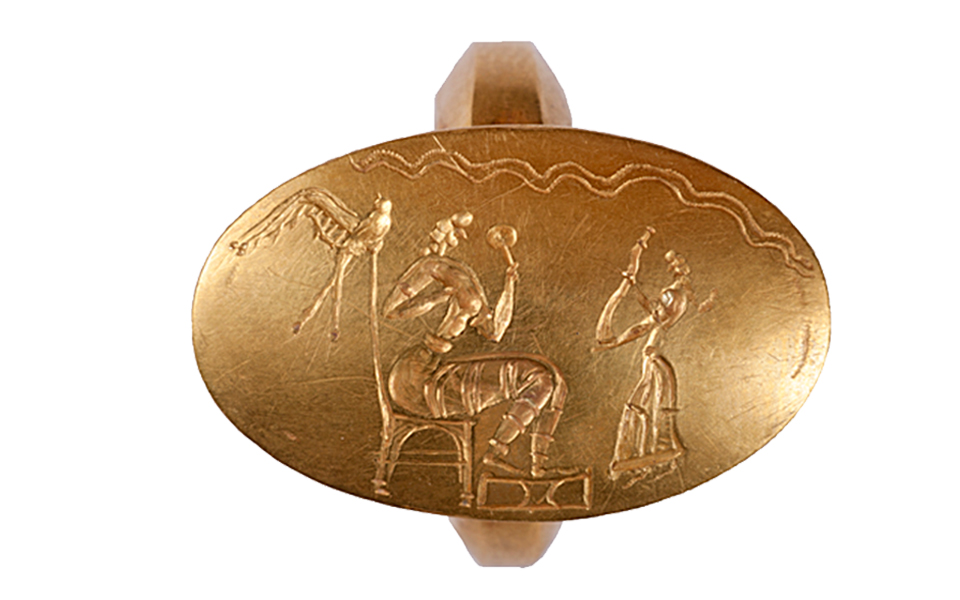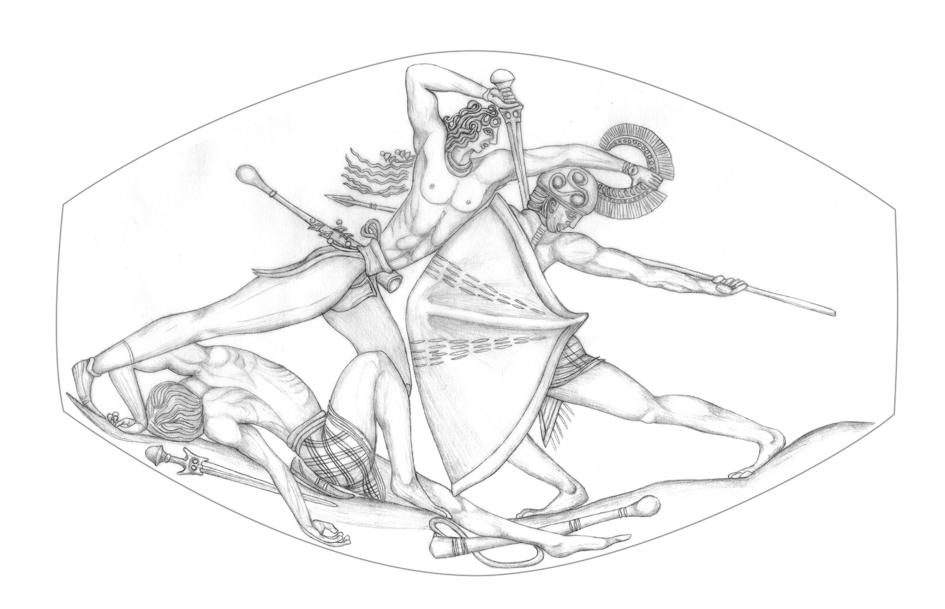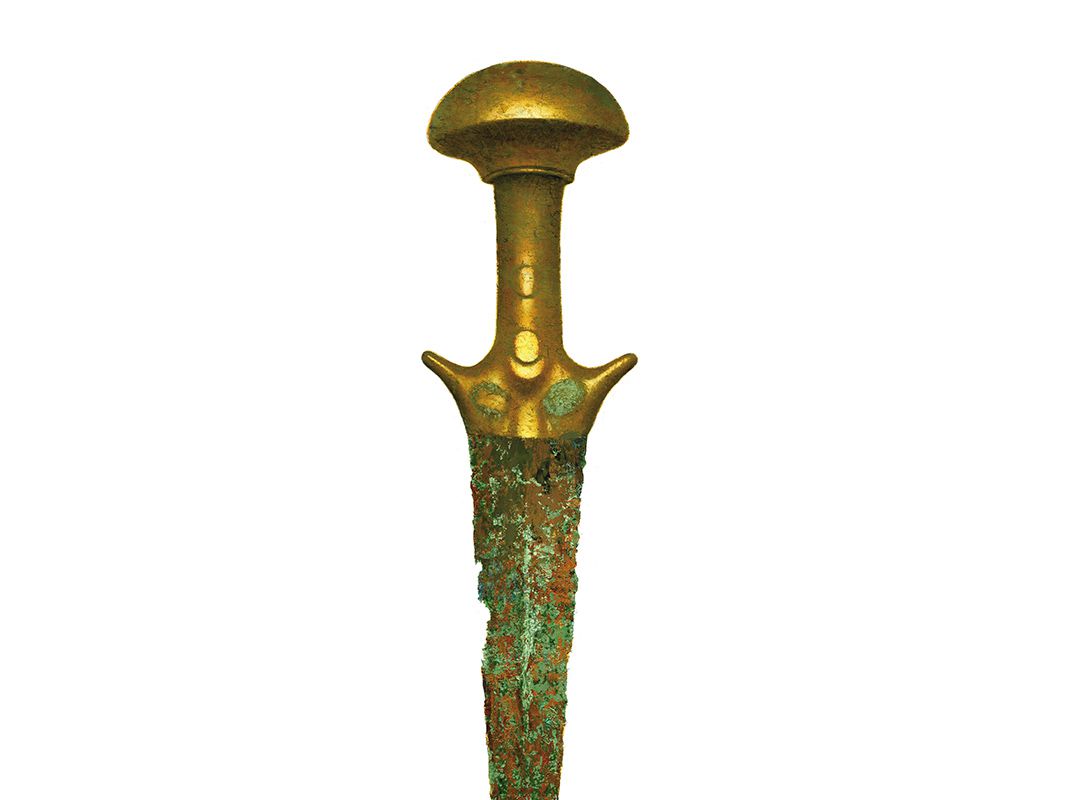It looks like you're using an Ad Blocker.
Please white-list or disable AboveTopSecret.com in your ad-blocking tool.
Thank you.
Some features of ATS will be disabled while you continue to use an ad-blocker.
share:
a reply to: LoneCloudHopper2
If they managed to survive long enough to even learn or witness such skills given the barbarity and other unknown factors back then.
If they managed to survive long enough to even learn or witness such skills given the barbarity and other unknown factors back then.
originally posted by: cavtrooper7
a reply to: punkinworks10
MINOANS again...were they in fact Atlaniteans?
Uuhh yah,
That is the point I have been trying to make whenever and wherever possible.
Dim memories of the Minoans and their former power are the foundation upon which Plato's allegory is built.
Plato hits on facts in the dialogues, that he had no way of knowing; the ringed harbour of thera, hot and cold running water plumbed into houses from springs, these things he could not know, nor could anyone of his time. Thera was buried under 200' of ash by the eruption, to not be seen again for 3500 years.
Its my opinion that the Hyksos were Minoans, using Mycenaen and Caananite mercenaries.
The Hyksos capital ,Avaris, was a Minoan colony in the Nile delta. Its port could berth more than 400 ships.
originally posted by: Aliensun
a reply to: soberbacchus
What can we say? Amazing! I can only guess that it is the work of a laser.
Just the work of a very skilled craftsman. This type of work is not unknown; the detail work on some seals as early as Babylonian times is quite impressive. Take a look at this one, done about a thousand years BEFORE that one was carved
Here's another example - about the size of a bead on a necklace yet notice that it's got a lot of text on it and that the figures are well detailed (this is smaller than the agate.)
Or this gold necklace from the tomb of a Scythian king
More and more we discover in bits and pieces that ancient history was not as simple as classical anthropology would have us believe.
Actually, you're not seeing what anthropology and archaeology would have you believe.
In general, you're just seeing one example that's proclaimed as "astonishing" rather than the millions of other examples that stretch back even earlier in time. Humans can do amazing things and they don't need modern technology. We've changed the tools and the processes (and the tools were discarded as "old fashioned" when better technology came along) but master artisans of the past were capable of some incredible designs (and engineering.)
I hope you'll take the time to explore some of the museums and get a sense of the marvels that have been discovered.
originally posted by: Kandinsky
a reply to: soberbacchus
What do you say? Would you prefer to have your best work survive the ages in anonymity or have your name survive and none of your works?
He (most likely, but very occasionally might be "she") was an artist/craftsman in the royal workshops, highly paid, well housed, etc. Almost no one signed their names back then (if they could write, in fact.) There are a number of ancient artifacts clearly done by one artist (these examples of ancient Greek pottery, for instance) - but an artist who had a workshop and never signed their name. An artist whose name is not mentioned in any documents.
originally posted by: Skywatcher2011
Those must have been some sexy ass gladiators back then OWWWWWWW!!!!!!
This is from 3500 years ago, from Ancient Greece. Gladiators were a class of slaves in Ancient Rome, beginning around 2300 years ago or so.
Gladiators were often large-chested so they could survive longer in the arena. It is largely myth that they had tight abs and a lean physique.
edit on 11132017 by TheStalkingHorse because: (no reason given)
originally posted by: soberbacchus
a reply to: tinner07
Yes Pretty Amazing
See here for more:
This 3,500-Year-Old Greek Tomb Upended What We Thought We Knew About the Roots of Western Civilization
The recent discovery of the grave of an ancient soldier is challenging accepted wisdom among archaeologists
www.smithsonianmag.com...
Here is the sword they also found among the Griffin Soldier's remains:
and it resembles the Sword on the Ground from the First Fallen/Slain
on the Stone ,
That I also Noticed right off Wonder how many Members thought that also ..

edit on 22017TuesdayfAmerica/Chicago11317 by Wolfenz because: (no reason given)
a reply to: TheStalkingHorse
Yes there is a YUGE difference between "gladiators",who as you pointed out were slaves, and the warrior class elite of Minoan/Mycenaen society.
While both were fighters, the galdiators were forced to and their training was geared to survival in the arena with specialized weapons. The "greek" warrior class chose to follow the warrior lifestyle, and it was as much about the idealized image of a warrior, the perfect physique, the stylish hair, jewlery and clothes as it was about combat.
As bad as the movie "Troy" was as a movie, they did nail some of the more substantive facets of the heroic age.
Brad Pitt's portrayal perfectly illustrated the "rock star"like qualities of the warrior elite.
Though they trained and worked out incessantly, they actually fought very little beyond individual combat involving matters of honor, that duty befell the mercenary "tribes" that Mycenaens were once counted among.
Yes there is a YUGE difference between "gladiators",who as you pointed out were slaves, and the warrior class elite of Minoan/Mycenaen society.
While both were fighters, the galdiators were forced to and their training was geared to survival in the arena with specialized weapons. The "greek" warrior class chose to follow the warrior lifestyle, and it was as much about the idealized image of a warrior, the perfect physique, the stylish hair, jewlery and clothes as it was about combat.
As bad as the movie "Troy" was as a movie, they did nail some of the more substantive facets of the heroic age.
Brad Pitt's portrayal perfectly illustrated the "rock star"like qualities of the warrior elite.
Though they trained and worked out incessantly, they actually fought very little beyond individual combat involving matters of honor, that duty befell the mercenary "tribes" that Mycenaens were once counted among.
originally posted by: TheScale
ive always wondered if what we consider amazing hand crafted work by a master in ancient times was something much more common then we think back then. when u werent working to survive there wasnt a whole lot to do. if u wanted something u pretty much had to make it so i have a feeling that each person was rather skilled at hand crafts. i have a feeling if we pit these people from ages past against our masters of today they would make us look like amatuers
We have discovered this miniature piece of art with todays technology. And even still, they thought for most of the time they had it in their possession that it was just a gem stone, not an intricately carved work of art.
Just imagine for a moment how many countless other similar pieces, or indeed other ancient artifacts have been lost by incidental destruction during excavation of ancient sites around the world.
Imagine if this or something similar had been discovered say 200-150 years ago.
A lot of what we "know" about the ancients is based on what we have discovered. A lot that was thought to be myth, has been found to have been real based on artifacts found.
So if we go back 200 years, and find this piece, will what we know of the ancients, would what we had been searching for, been updated, and would we know them in a different light?
I'm not one who thinks the truth about the ancients is being suppressed, what would be the point who would it benefit to keep such small secrets?
originally posted by: LoneCloudHopper2
It really makes you wonder what it would be like to live in that time. I have a feeling that if someone were to travel back in time to this period it would be rather bizarre to discover skills, arts and technologies that we never realized they might have.
Right...
its hard to Grasp for them , for the Technology was Lost as the Equipment & Tools
did not Survive. or haven't been Discovered as of Yet ..
How did they do it .. ?? no Magnifying Glass was Found in the Era.. so they say.
Just as Leonardo Di Vinci's Work of the Human Body
that place placed too the Public from Queen Elizabeth's Vaults
Depicting Microscopic Anatomy, only can be done with a Microscope
yet claims None never existed in Di Vinci's Time Frame .. So they say..
Amazing Work of Art and the Detail of muscle's the Long hair , The Detail of the clothing..
Incredible..
but Why . for what Purpose ? , is this Griffin Warrior is someone of Noble ?
but what about the Rings??
They Look as if its
the same kind of Artwork of Sumerian Cylinders Seals


its close too the Same


Well Similar Artist , Artwork ..
Amazing ..
edit on 22017TuesdayfAmerica/Chicago11317 by Wolfenz because: (no reason given)
a reply to: Byrd
This is an interesting old book that has some nice prints of ancient Babylonian Seals:
1885 Babylonian Seals
One of those seals dates from 3800 BC. More than 2300 years before the Greek Engraving. It has similar detail and size. And the material on which the relief is carved is of similar hardness. So, the tools to do this work have been in existence for at least 5800 years. In any event, reliably manufacturing tools at the scale necessary to complete these works of art was a feat in itself.
According to the above reference, corundum was probably used. But diamonds were likely available at that time as well. Diamonds would certainly be known in Greece by 1450 BC. However it seems more likely that diamonds would be viewed as precious stones, rather than tools.
I can't speak to the quality of the art. I would think that would be less attributable to tools than to skill and training of the artist.
One difference apparent between the two types of engravings is that the Greek artwork is bas-relief, while the Babylonian engraving is of the intaglio relief style. Carving into the stone is somewhat easier than this Greek method of relief carving, which would probably require the ability to polish the stone at very small scale.
The biggest thing that is difficult for me to comprehend is how they were able to produce these carvings at such a tiny scale without the assistance of magnification.
To use an electronics metaphor, this strikes me as being more difficult than surface mount soldering a flat-pack IC chip on a circuit board without magnification. And doing it right the first time, with no solder bridges.
-dex
This is an interesting old book that has some nice prints of ancient Babylonian Seals:
1885 Babylonian Seals
One of those seals dates from 3800 BC. More than 2300 years before the Greek Engraving. It has similar detail and size. And the material on which the relief is carved is of similar hardness. So, the tools to do this work have been in existence for at least 5800 years. In any event, reliably manufacturing tools at the scale necessary to complete these works of art was a feat in itself.
According to the above reference, corundum was probably used. But diamonds were likely available at that time as well. Diamonds would certainly be known in Greece by 1450 BC. However it seems more likely that diamonds would be viewed as precious stones, rather than tools.
I can't speak to the quality of the art. I would think that would be less attributable to tools than to skill and training of the artist.
One difference apparent between the two types of engravings is that the Greek artwork is bas-relief, while the Babylonian engraving is of the intaglio relief style. Carving into the stone is somewhat easier than this Greek method of relief carving, which would probably require the ability to polish the stone at very small scale.
The biggest thing that is difficult for me to comprehend is how they were able to produce these carvings at such a tiny scale without the assistance of magnification.
To use an electronics metaphor, this strikes me as being more difficult than surface mount soldering a flat-pack IC chip on a circuit board without magnification. And doing it right the first time, with no solder bridges.
-dex
a reply to: Aliensun
Lasers from... like what, aliens?
Crap. Unless you can show me 'lasers' or any tiny bit of actual technology discovered in Antiquity, anywhere.
Its obviously man made, obviously carved to precision detail by a master craftsmen. The same sort of skill that produced fine detail in a later period-- fine watch mechanisms were produced before they had laser cutters or machine tools, too. Then theres the Antikythera Mechanism
'Aleeens did it', lol.
What can we say? Amazing! I can only guess that it is the work of a laser.
---
More and more we discover in bits and pieces that ancient history was not as simple as classical anthropology would have us believe.
Lasers from... like what, aliens?
Crap. Unless you can show me 'lasers' or any tiny bit of actual technology discovered in Antiquity, anywhere.
Its obviously man made, obviously carved to precision detail by a master craftsmen. The same sort of skill that produced fine detail in a later period-- fine watch mechanisms were produced before they had laser cutters or machine tools, too. Then theres the Antikythera Mechanism
'Aleeens did it', lol.
Sorry if anyone has suggested it already, my guess is the craftsman had a rudimentary magnifying glass, carved from a piece of clear crystal. After
all he was a skilled artist, wasn't he?
Since we know rock crystal existed, since we know he also carved in gem stone, it would only take a tiny field of view thru a bit of carved stone to facilitate just enough magnification for the artisan to work on such a tiny figure.
People are saying the 'size of a thumb', are there any images that include a familiar object to compare scale?
Since we know rock crystal existed, since we know he also carved in gem stone, it would only take a tiny field of view thru a bit of carved stone to facilitate just enough magnification for the artisan to work on such a tiny figure.
People are saying the 'size of a thumb', are there any images that include a familiar object to compare scale?
edit on 14-11-2017 by intrptr
because: spelling
originally posted by: intrptr
Sorry if anyone has suggested it already, my guess is the craftsman had a rudimentary magnifying glass, carved from a piece of clear crystal. After all he was a skilled artist, wasn't he?
The article explained that there are no know magnifying tools from 3500 years ago or earlier that have been discovered.
I'd be apt to split the difference and assume there was magnifying tools/magnifying glasses then but they were likely exceedingly rare and guarded technology. Remember back then that most people who understood science were considered wizards with magic and usually employed and guarded by royalty. Hell...the first astronomer who was able to predict a solar eclipse? To be able to point to the sky and say "now I will make the Sun go away?" Gunpowder was also a guarded secret technology in Asia for a long time. Possibly some clever artisan figured the basic laws of optics and light and how to fashion a magnifying glass, but kept it a hidden secret. The knowledge could have died with him and it could have taken 500 years for someone else to make the same discovery.
originally posted by: soberbacchus
a reply to: tinner07
Yes Pretty Amazing
See here for more:
This 3,500-Year-Old Greek Tomb Upended What We Thought We Knew About the Roots of Western Civilization
The recent discovery of the grave of an ancient soldier is challenging accepted wisdom among archaeologists
www.smithsonianmag.com...
Here is the sword they also found among the Griffin Soldier's remains:
What a huge sword pommel, in relation to the length of the sword.
a reply to: soberbacchus
No Known, but heres the evidence staring us in the eye.
Or exceedingly expensive and only the wealthiest could afford them. His grave contained five other gold 'signet' rings?
Michelangelo and Da Vinci hired out to the Royals exclusively, for money.
The article explained that there are no know magnifying tools from 3500 years ago or earlier that have been discovered.
No Known, but heres the evidence staring us in the eye.
I'd be apt to split the difference and assume there was magnifying tools/magnifying glasses then but they were likely exceedingly rare and guarded technology.
Or exceedingly expensive and only the wealthiest could afford them. His grave contained five other gold 'signet' rings?
Michelangelo and Da Vinci hired out to the Royals exclusively, for money.
a reply to: soberbacchus
There are Egyptian hieroglyphics from about 800 BCE (I may be off on the date but I'm sure Byrd will correct me if I'm wrong) depicting polished crystals used for magnification and the oldest physical optics we know of would be the Assyrian Nimrod Lense from around 750 BCE. That's gives us evidence for optical magnification going back at least 2800 years so I don't think it's an unreasonable inference to think that this type of thing existed a few hundred years earlier in some shape or form. It's not like anyone is claiming that Scanning Electron Microscopy existed in the Brone Age. We're talking about polished crystals which are pretty common in the ancient Near East.
en.m.wikipedia.org...
ETA trying to find a link for the hieroglyphs and they're elusive at the moment so I may be incorrect in that example. I'll keep digging though.
There are Egyptian hieroglyphics from about 800 BCE (I may be off on the date but I'm sure Byrd will correct me if I'm wrong) depicting polished crystals used for magnification and the oldest physical optics we know of would be the Assyrian Nimrod Lense from around 750 BCE. That's gives us evidence for optical magnification going back at least 2800 years so I don't think it's an unreasonable inference to think that this type of thing existed a few hundred years earlier in some shape or form. It's not like anyone is claiming that Scanning Electron Microscopy existed in the Brone Age. We're talking about polished crystals which are pretty common in the ancient Near East.
en.m.wikipedia.org...
ETA trying to find a link for the hieroglyphs and they're elusive at the moment so I may be incorrect in that example. I'll keep digging though.
originally posted by: intrptr
a reply to: pikestaff
What a huge sword pommel, in relation to the length of the sword.
All the better to stove your helmet in.
I imagine they knew that armored adversaries were likely to ruin their bronze blades so used the pommel instead, whenever possible.
Also looks like they carried a club as well.
Edit to Add: Or is that a shealth for the sword? If Shealth why the bulb at the end? If club, why does it look hollow?

edit on 14-11-2017 by soberbacchus because: (no reason given)
new topics
-
Denmark's Notre-Dame moment - 17th Century Borsen goes up in Flames
Mainstream News: 30 minutes ago -
We need less laws in the UK not more
General Chit Chat: 2 hours ago -
The Baloney aka BS Detection Kit
Social Issues and Civil Unrest: 8 hours ago -
Suspected Iranian agent working for Pentagon while U.S. coordinated defense of Israel
US Political Madness: 8 hours ago -
How does my computer know
Education and Media: 11 hours ago
top topics
-
Suspected Iranian agent working for Pentagon while U.S. coordinated defense of Israel
US Political Madness: 8 hours ago, 14 flags -
USO 10 miles west of caladesi island, Clearwater beach Florida
Aliens and UFOs: 15 hours ago, 9 flags -
The Baloney aka BS Detection Kit
Social Issues and Civil Unrest: 8 hours ago, 6 flags -
We need less laws in the UK not more
General Chit Chat: 2 hours ago, 4 flags -
How does my computer know
Education and Media: 11 hours ago, 3 flags -
Denmark's Notre-Dame moment - 17th Century Borsen goes up in Flames
Mainstream News: 30 minutes ago, 2 flags
active topics
-
DWAC Trumps Truth social stock soars .
Mainstream News • 112 • : matafuchs -
Running Through Idiot Protestors Who Block The Road
Rant • 60 • : Justoneman -
America's Infant Mortality Rate Increases for the First Time in 20 Years
Medical Issues & Conspiracies • 20 • : DoubleDNH -
Are the 'Abrahamic Religions' all Really the Worshipping the Same Abrahamic God?
Conspiracies in Religions • 177 • : Sookiechacha -
Putin Compares Himself to Jesus Promoting Traditional Values Against the Satanic West
Mainstream News • 68 • : whereislogic -
HUGE blow for alternate theory of gravity MOND
Science & Technology • 38 • : Arbitrageur -
It has begun... Iran begins attack on Israel, launches tons of drones towards the country
World War Three • 647 • : xuenchen -
Suspected Iranian agent working for Pentagon while U.S. coordinated defense of Israel
US Political Madness • 21 • : Boogerpicker -
We Captured a Honey Bee Swarm Today (Video)
Fragile Earth • 21 • : TheInvisibleRedneck -
The Baloney aka BS Detection Kit
Social Issues and Civil Unrest • 9 • : YourFaceAgain

